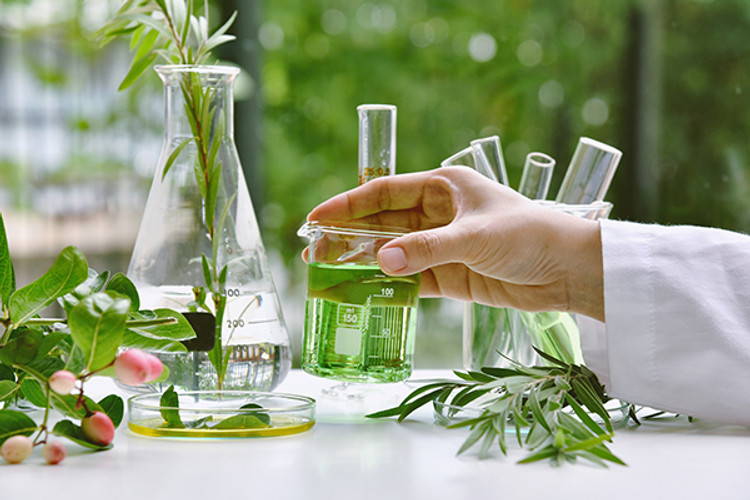Posted by sweetsation therapy on 13th Aug 2021
Preservation Reservation
Yucky, yucky preservatives. Stay away! Do you hear this often? I bet. As much as I am tempted to follow the trend of warning humanity against preservatives as an evil we can’t get away from, I will not. In recent times it became very common to market products as ‘preservative free’ due to this reason, but truth of the matter is that if a product is skillfully made (not in someone’s kitchen following a blogger’s recipe) all products marketed to public and offering a decent shelf life do and must contain some type of preservation. And for a good reason – for your own protection. Contaminated products will do a lot more harm to your skin and health, vs delivering any benefits from all those awesome ingredients it contains.
Some products sold as fresh may come with a recommendation to be refrigerated. At first it may sound like a viable option if you want to avoid preservatives entirely. But those types of products will have shelf life of about 4 weeks and will need to be used up relatively quickly. Imagine stagnant water and how quickly it turns into a stinky swamp… Skin care products, like creams and lotions, usually contain 70% or even more water in them. And if they contain any plant based ingredients, and natural products obviously do, imagine all that yummy, yummy food for the bacteria to consume. After all, they have nothing better to do but eat and breed.
Got the picture?
And, it’s also quite impractical. To remember to take your product out of the refrigerator, use it, and then remember to put it back. Every day. Such strict routine may fail on more days than one during a month period, resulting in a ruined product. We don’t think that this is a worthy commitment, considering that more and more products today are switching to more natural and promising alternatives.
First, take the pressure of research off of yourself. Because guess what? We are here to support you, entertain you and share the knowledge the best we can. You are a mega-important for us in the universe. And health, wellness and beauty is our common goal.
Here I will go over a few most popular natural preservation choices to look for. Natural or nature identical preservatives are a great choice for natural and organic cosmetics and are hands down a better choice than no preservatives at all. There is a downside to them too, however. They are not as potent as conventional preservatives such as parabens, and this may result in a shorter shelf life to the product containing them. So watch closely and use up the product before it expires. Usually it’s something between 6 months and 1 year. Sometimes companies combine a few at the same time (pre-made preservative blends) to prolong the shelf life, but on average it’s around 1 year mark to be on a safe side.
I will try to keep it short and list here a few that’s used most often:
Sodium Benzoate + Potassium Sorbate – Usually used in combination or as a booster to another preservative. But did you know that they are not really natural? They are nature identical. Nevertheless, they are approved to be used in natural cosmetics.
Spectrastat™ G2 Natural MB (Caprylhydroxamic Acid (and) Glyceryl Caprylate (and) Glycerin) - is a 100% natural complete blend for self-preserving products. You can find this preservative in products claiming to be ‘preservative free’. And it's also present in our Biomaze Microdermabrasion Balm and Phytome Cleansing Nectar.
Geogard ECT (Benzyl Alcohol (and) Salicylic Acid (and) Glycerin (and) Sorbic Acid) – Broad spectrum preservative blend and also popular.
Geogard Ultra™ (Gluconolactone (and) Sodium Benzoate) contributes an added skin moisturisation benefit and has conformance with ECOCERT/COSMOS, NATRUE and the Soil Association.
Dermosoft 1388 Eco (Aqua (and) Glycerin (and) Sodium Levulinate (and) Sodium Anisate) convenient blend of plant derived organic acids with broad antimicrobial activity. Used in our Blu’marine Pacific – 4D Pro-Collagen Elixir and Hydrassance Bio-Energizer Essence.
Leucidal® Liquid SF (Lactobacillus Ferment) is a probiotic-based ingredient created by the fermentation of Lactobacillus, one of the species of microorganisms used to produce fermented products, such as kim-chi and sauerkraut, a Korean dietary staple,from cabbage. Provides broad spectrum antimicrobial protection and is used in our Azurien Clarifying Essence and Enahance Renewal Essence.
Lexgard® Natural MB (Glyceryl Caprylate (and) Glyceryl Undecylenate) multi-functional ingredient system for self-preserving cosmetics. Also can be found in products claiming to be preservative free.
And there is another one I want to mention that I discovered recently – Hinokitiol. Maybe a rising star of tomorrow….. Originated from Aomori Hiba Oil (obtained through water vapor distillation of xylem and roots of Japanese Aomori Hiba tree). It’s touted to be very effective at very low doses. I was so excited to experiment with it, till I was quoted the price $4,300/kg. At which point my heart sank to the bottom of the very bottoms, realizing that using this ingredient would make the products essentially cost prohibitive. So there is a good chance you will not be seeing it anywhere.
There are other little tricks to prolong the shelf life of natural products. Such as added natural chelating agents, such as Sodium Phytate, adding glycols, such as Pentylene glycol that helps to boost antimicrobial performance. Preservatives are not all created equal and if you are planning to use your product for longer than being on a timer for 1 month, please look for a friendly preservation system in your product.

